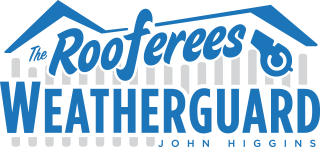A freak hail storm leaves mini craters in your roof. An old tree topples during a storm and lands on your roof. Severe winds pull the tiles right off your roof. In each of these cases you’re going to be working with an insurance adjuster to gain funding to repair or replace your roof.
For insurance adjusters, dealing with distressed homeowners is a daily occurrence. They have the job of coming to your home to assess damage and determine how much funding their company will provide to repair or replace your roof.
The thing is, insurance adjusters are people, just like all of us. In most parts of the country you’re talking about overworked men and women who put in long hours just to keep up with the results of Mother Nature and her fury.
Pack Your Patience
Trent Lovewell knows about working with insurance adjusters. As head of John Higgins Weatherguard, Inc. in Omaha, Nebraska, he’s witnessed repeated storm problems requiring insurance claims.
“We’re in an area that gets lots of storms, so insurance adjusters are kept busy all the time,” says Lovewell. “We see many of the same adjusters after these storms. These folks work days and weeks for long hours and away from their families. Not a lot of people want to do that type of stressful job.”
According to Lovewell, skilled insurance adjusters are in demand. When a storm hits and adjusters are pulled in many directions, it can be stressful for both you and for the adjuster.
“Homeowners need to have some patience with adjusters,” says Lovewell, whose company has installed more than 500 composite roofs from DaVinci Roofscapes. “That patience can go a long way in helping gain a fair resolution for a claim.
“You need to really understand how few adjusters there are across the country, and how they can get backlogged during different seasons with weather-related issues.”
Tips for Working with Adjusters
Lovewell offers these tips to homeowners on how to have a beneficial relationship with insurance adjusters:
Tip 1 – Be on time for an adjuster appointment.
Tip 2 – Participate in your first adjuster overview appointment. Do not leave the meeting to your contractor, roofer or remodeler. Adjusters want to meet just with the homeowner for the first meeting and not have a contractor looking over their shoulder.
Tip 3 – If you have pictures and other documentation of the initial damage, make sure to show the adjuster. Sometimes you need to remove a tree or tarp off an area of the roof. Take pictures before you do that and then share those pictures with the adjuster.
Tip 4 – Make a checklist of anything that got damaged as a result of the storm or situation and present the full list to the adjuster.
Tip 5 – Understand that the adjuster will be at your home for several hours. Adjusters need to thoroughly review the damage resulting from the storm, which can include areas both outside and inside the home.
Tip 6 – Not happy with the evaluation of the inspector? Ask the claim center for another inspection. In most states you’re allowed a second inspection by law.
Tip 7 – If a second inspection is provided, don’t be surprised if the insurance company asks to have your contractor on site for this inspection. You can still participate, but a second inspection may be more thorough and require the expertise of your contractor.
Tip 8 – Still not satisfied after the second inspection? Then talk to the claim center again. Ask if they can bring in an engineer to help evaluate the situation.
Tip 9 – Don’t beat up on the adjuster. Sure you may have had your home insurance for 20 years and never filed a claim. While you may “feel” like you deserve a new roof, it doesn’t work that way. The adjusters follow a specific set of parameters to determine what type of reimbursement their agency will provide to you.
Tip 10 – Honesty counts. The adjuster is there to evaluate the storm damage, so don’t try to include pre-existing problems in the claim. Just stick to pointing out what happened as a result of the storm.
Re-roof with a Performance Product
From his experience, Lovewell recommends that homeowners needing a new roof take the opportunity to upgrade to a high performance product.
“Why go back to the same type of roof that will get damaged in another hail storm?” asks Lovewell. “You’re going to keep paying the deductible and that can get expensive. Investing in a high performance roofing product makes good, common sense.
“Here’s another benefit. We’ve definitely seen where homeowner insurance premiums drop when people select a composite roof, like a DaVinci roof. The insurance companies recognize that these man-made roofs outperform natural materials and asphalt. That performance brings confidence to the insurance company that you’ll have fewer long-term claims.”
For more insights on working with insurance adjusters, click HERE or HERE. And, for details on high performance composite roofing products, visit www.davinciroofscapes.com.

